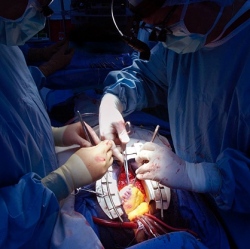
Despite the dramatic projected changes to healthcare in the 21st century, some aspects of care will remain the same. Hospital beds and chairs will still be in use, their design may alter but these vital pieces of furniture will still have to be wheeled around between the wards. Many things are set to change however.
Sci-Fi films may become a reality: At a recent Vancouver conference the Carbon 3D company claimed to the BBC that it had found a way of developing a 3D manufacturing process that could harness oxygen and light in order develop medical devices in the future. Inspired by the film Terminator 2, the company insists that it will be possible for it to manufacture medical stents as well as artificial teeth while the patient sat and waited for their ‘spare parts.’ Traditionally 3d printing uses advanced polymers, so the Carbon 3D breakthrough really does promise great changes in this revolutionary field.
3D printing has already been used at Morriston hospital in Swansea to create a reconstructed new face for a patient following a serious bike accident. The whole process used specialised printed models and implants in order to help the patient, Stephen Power, recover from his accident. The Centre of Applied Reconstructive Technologies in Swansea (Cartis) conceived this complex procedure and the operation took 8 hours to complete. Mr Powers is delighted with the end result and no longer feels that he has to hide away under a hat and behind dark glasses.
The Welsh breakthrough operation is just the start of things to come. Scientists from the University of Nottingham believe that 3D printing will cut down on the number of pills that patients have to take by formulating a single tablet to replace the numerous medicines that many people have to take on a daily basis. At some stage pharmacists hope that a combination of gene technology and 3D printing will be able to target health conditions more effectively.
Facial reconstruction will become increasingly more precise and implants will be tailored to the needs of each patient. This will cut down in surgery time and produce a better end result.
Today’s scientists are trying to develop 3D printing techniques that will develop regenerative treatments. Work has already started on bone replacement with successes in work with jaws, skulls and pelvises. Innovations with ear and nose development have already started.
The future of 3D printing in medicine is only curtailed by the limits of the scientists’ imaginations. With new announcements and developments from this industry coming in on a daily basis perhaps the creation of a bionic human skeleton isn’t too far in the future.
